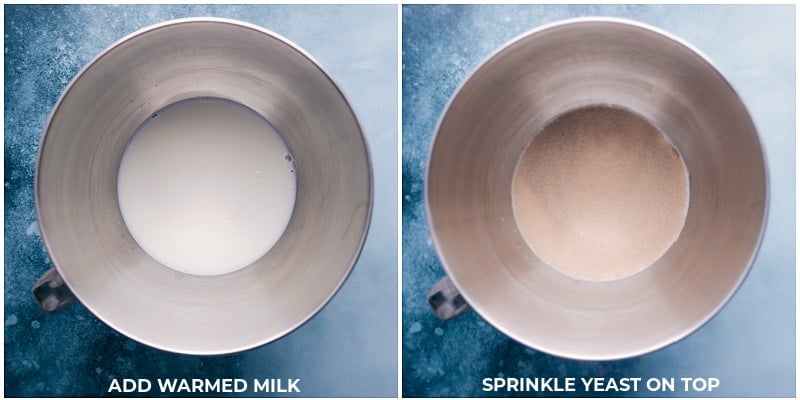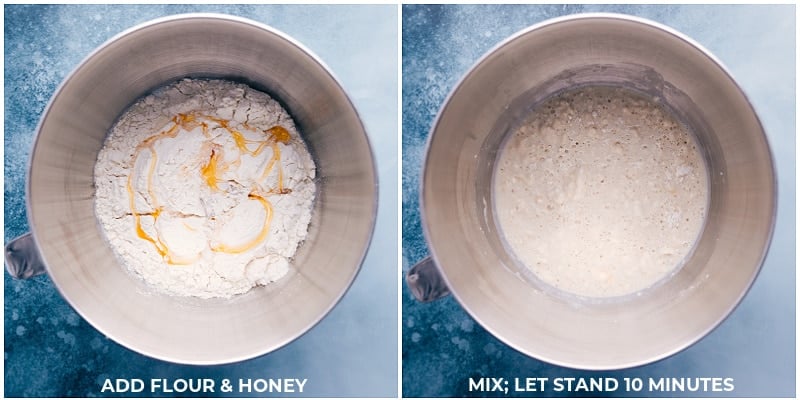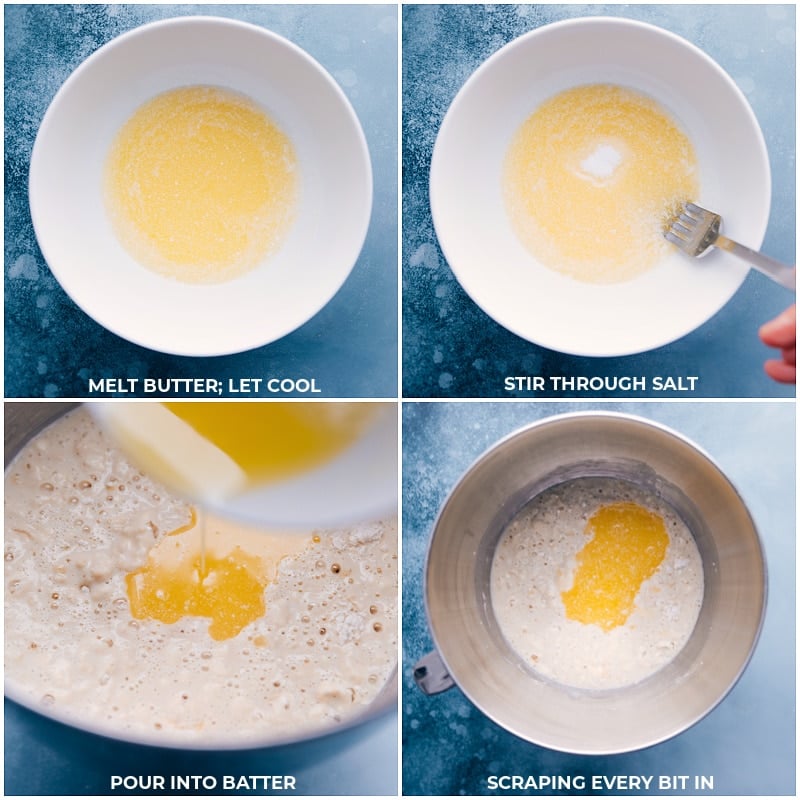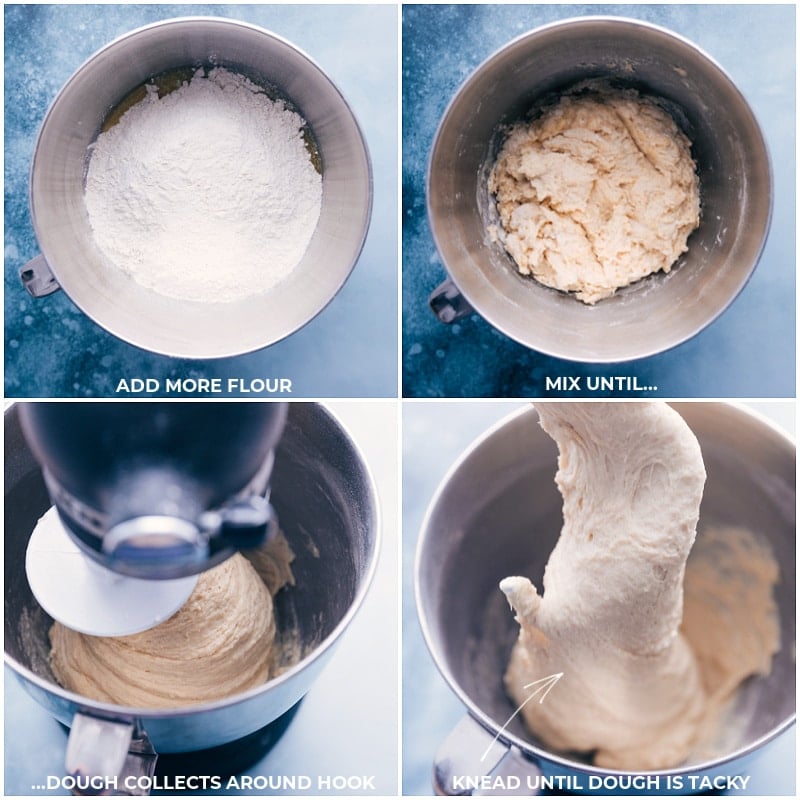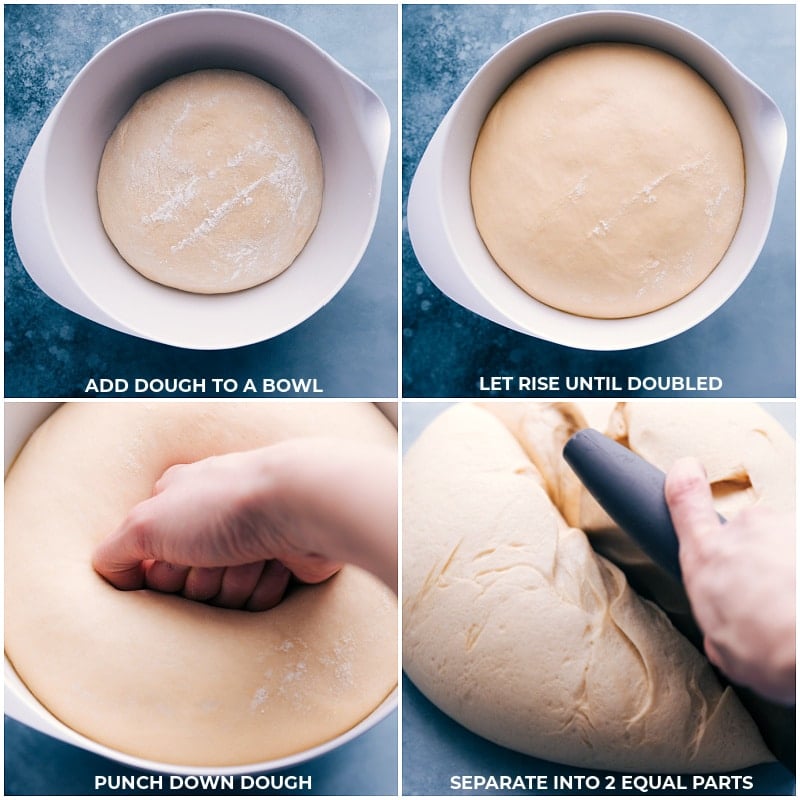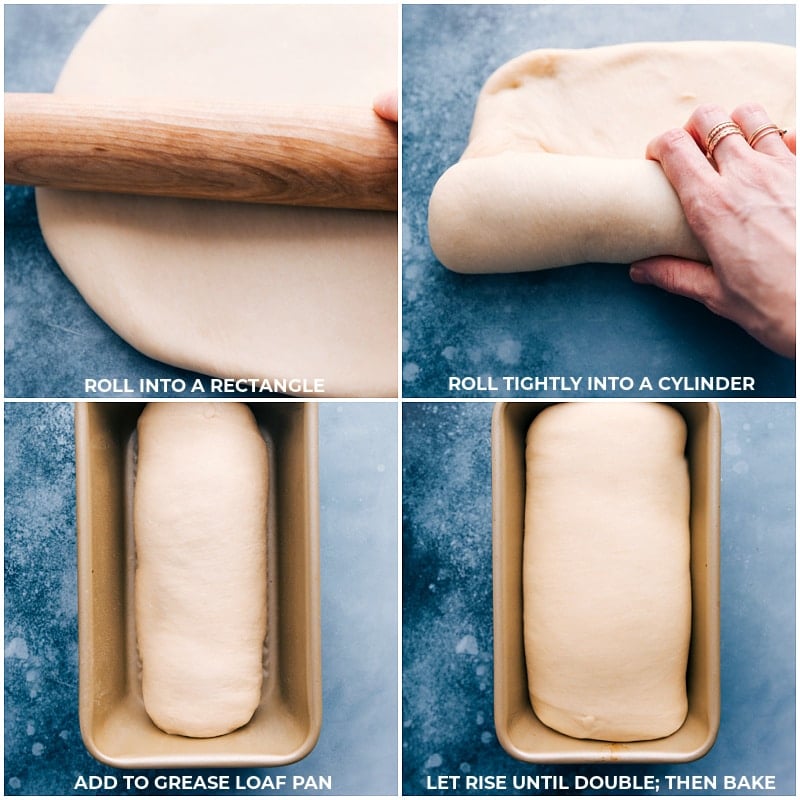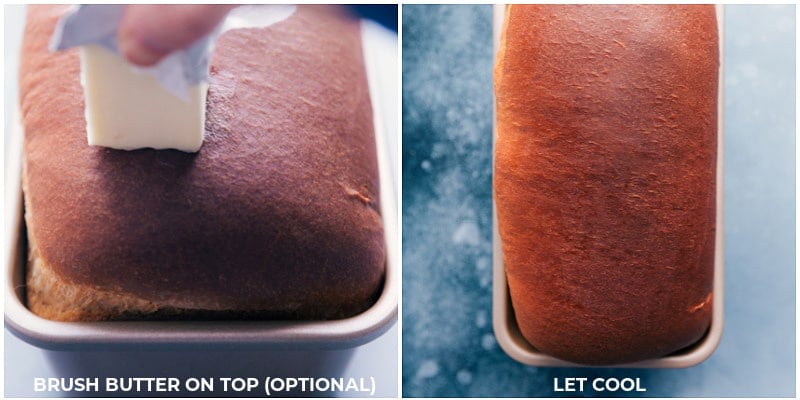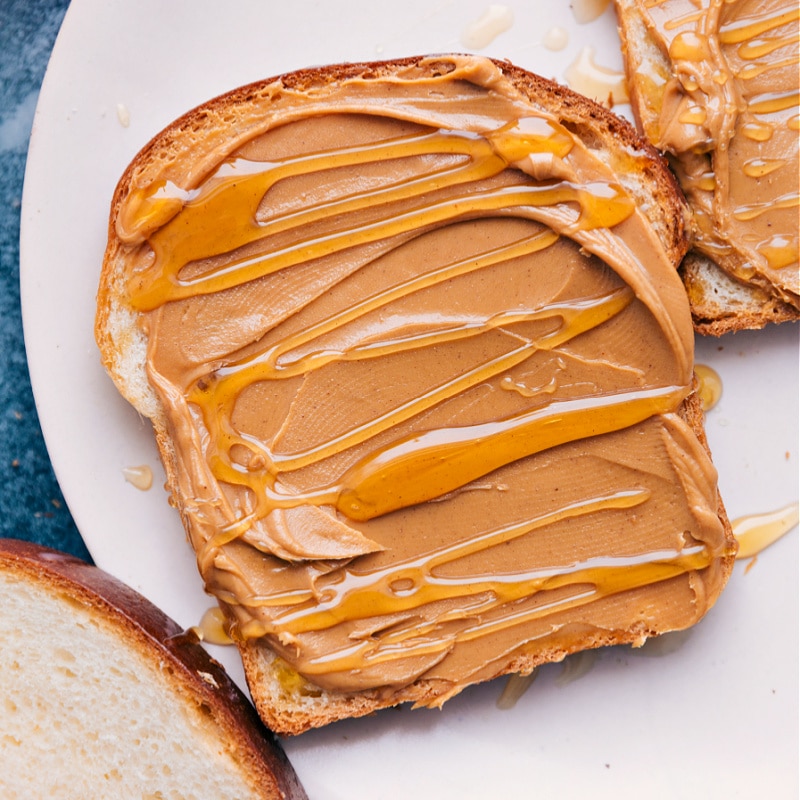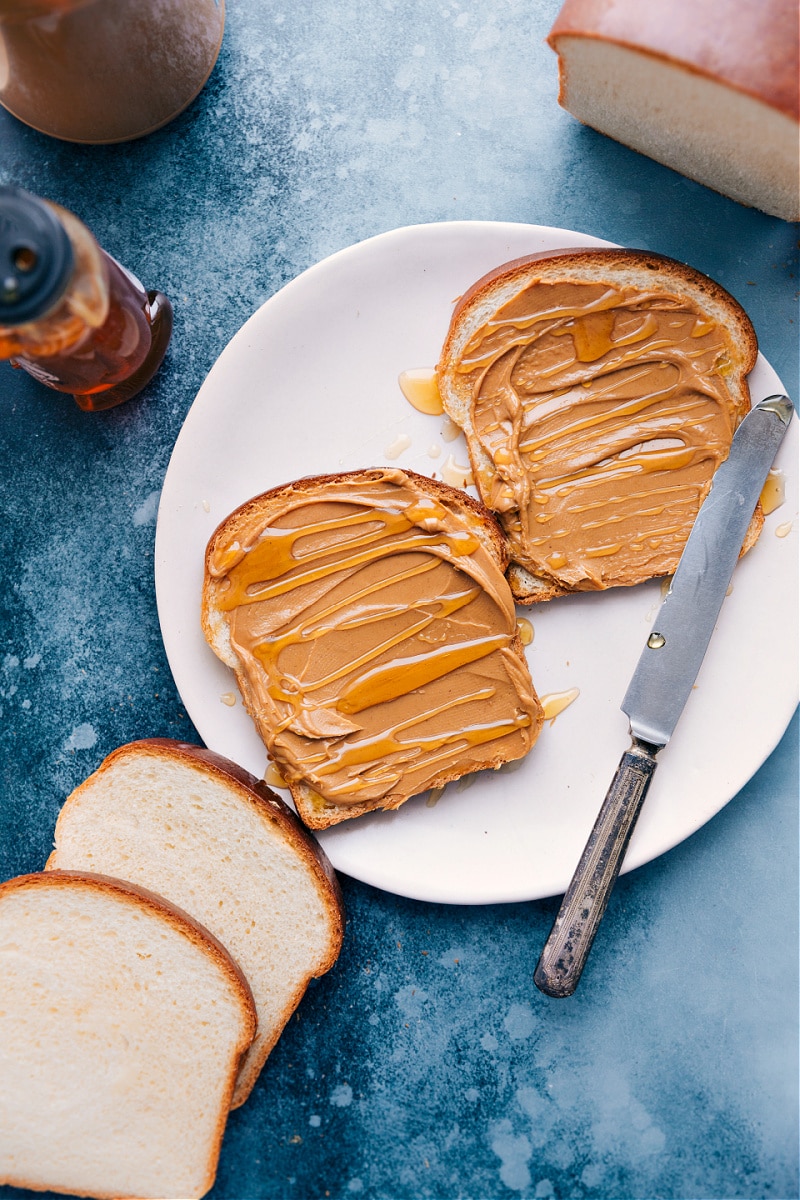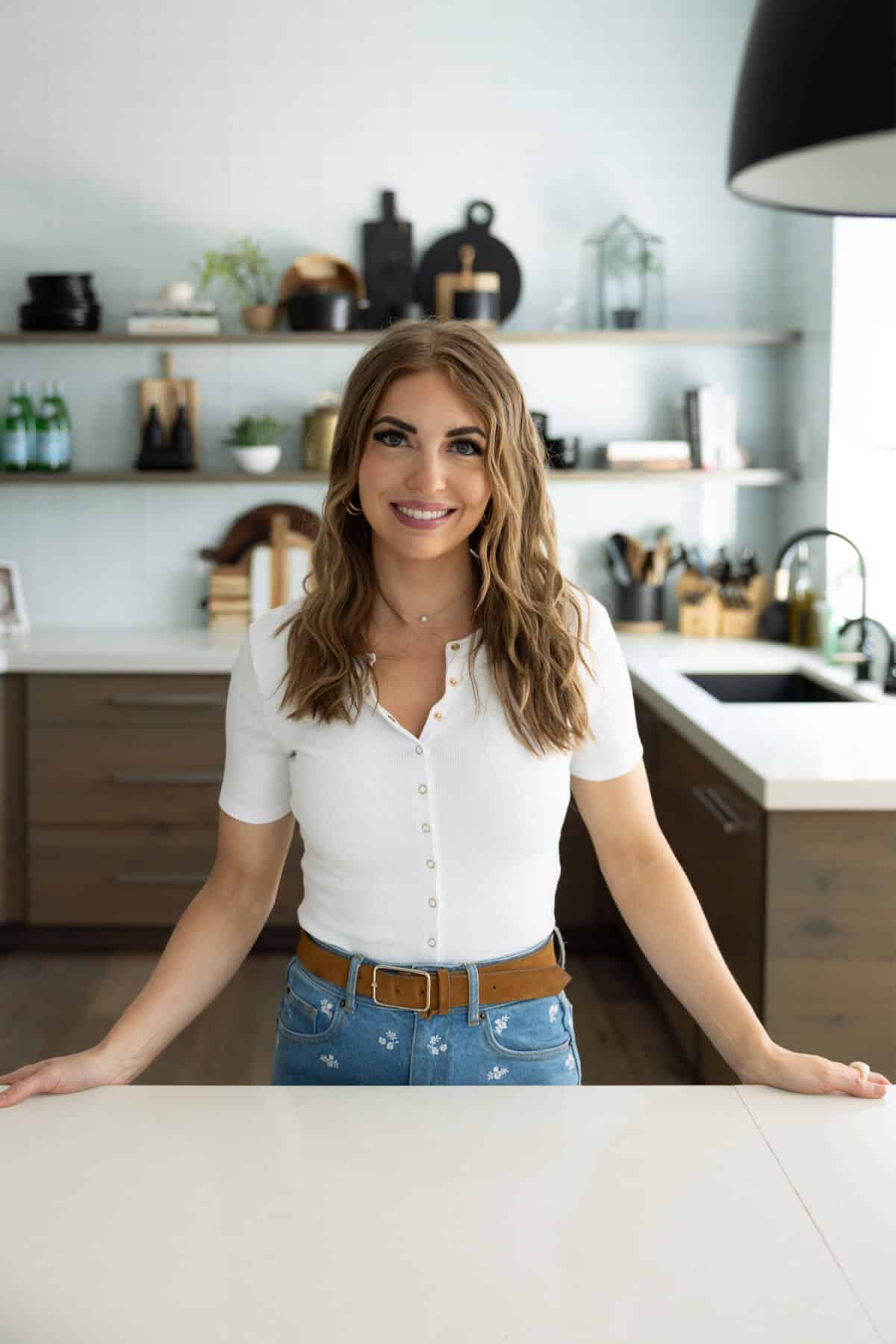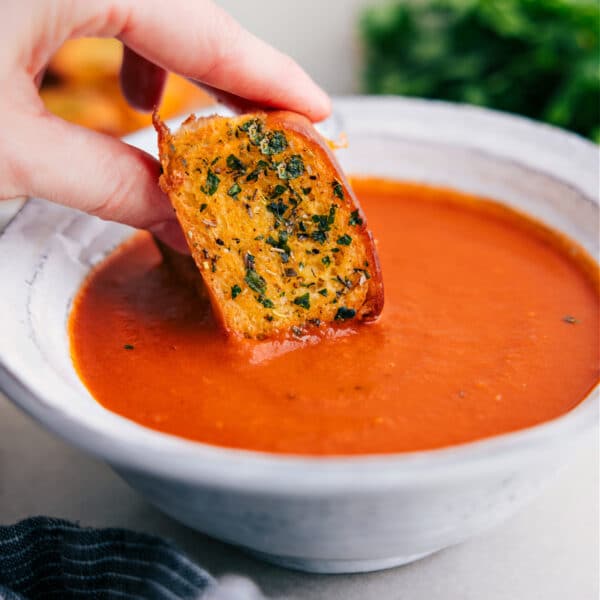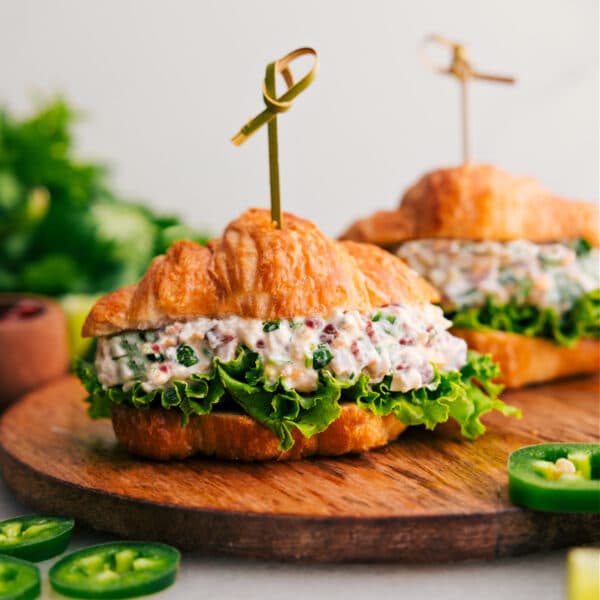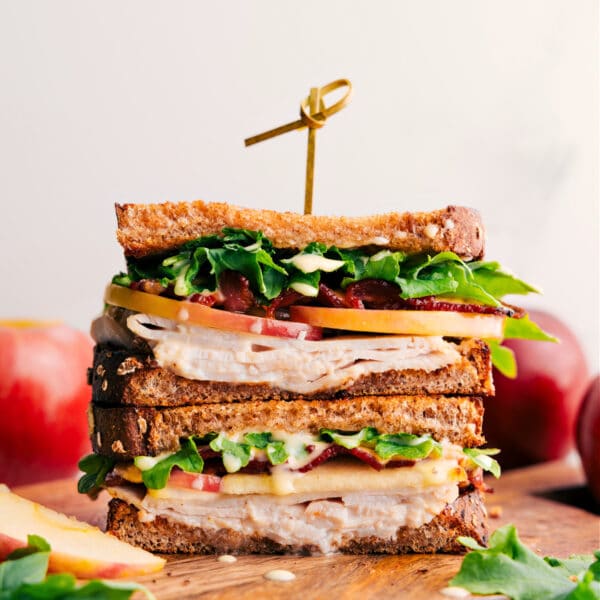This is our go-to, favorite classic White Bread recipe made with only six very common ingredients. Instead of making a grocery run first, you may already have everything you need!
This soft and delicious bread has a subtle sweetness and the perfect crumb — it’s hearty and sturdy, unlike most commercially sold bread.
Once you’ve mastered making this soft White Bread recipe, try our Honey Whole Wheat Bread or these addicting Dinner Rolls! Use leftover yeast in these Homemade Cinnamon Rolls or Lemon Blueberry Sweet Rolls.
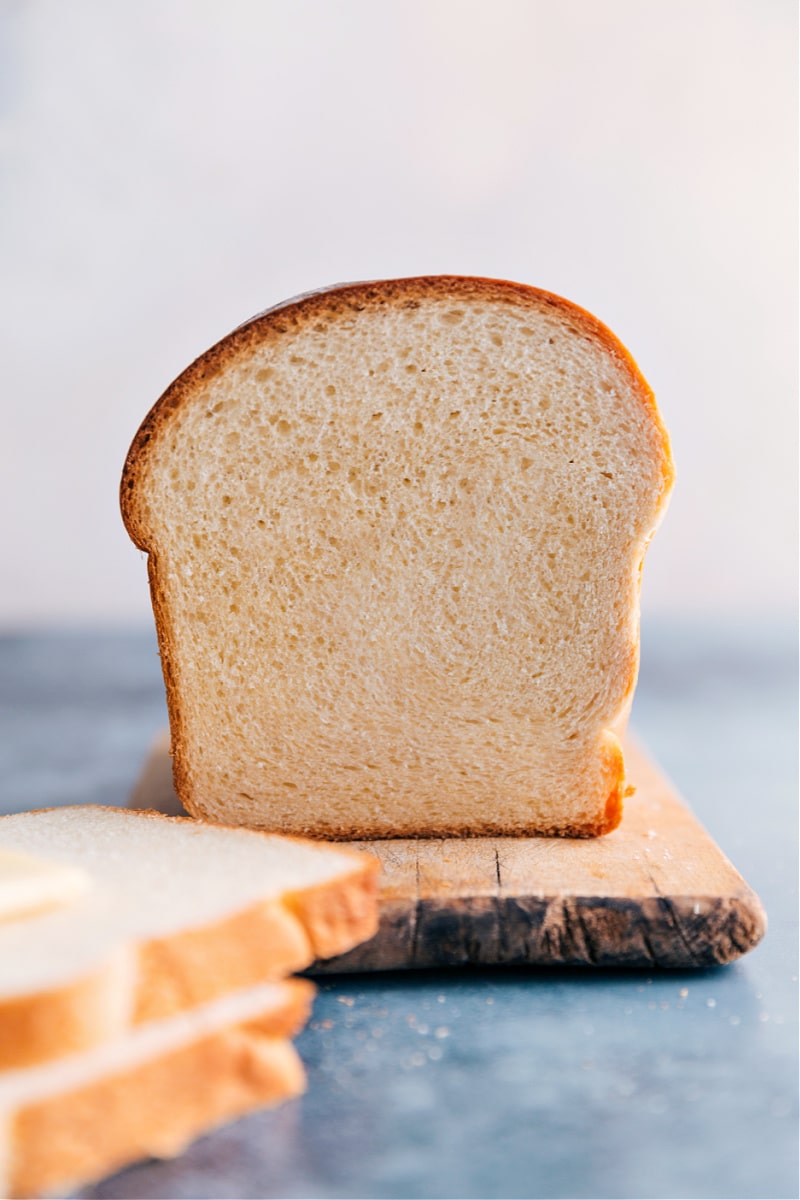
Is White Bread Bad For You?
While you can’t be certain what you’re getting when you buy a loaf of bread from the store, we’ve become hooked on making our own! The peace of mind you get from knowing exactly what is in the bread you and your family are consuming is priceless. You aren’t running the risk of added preservatives or filler ingredients.
But beyond health reasons, making your own bread is incredibly simple to do and requires very little hands-on time. Once you get the hang of making your own bread, it can become a pretty mindless task!
And truly, there is nothing that beats the taste of homemade bread. This recipe is hearty with the perfect texture and the best flavor — a subtle sweetness from the honey and richness from the butter.
One quick warning though: Once you start making white bread at home, your family might not be too keen on going back to store-bought!
Quick Tip
Try our favorite Breakfast Toast recipe with a slice of this homemade bread!
White Bread Ingredients
We think this is the best White Bread recipe ever because of a few ingredients that really make it stellar — honey, butter, and salt. We’ll discuss each ingredient in more depth below:
- Milk has fat which creates an even softer and more-indulgent tasting white bread. You can certainly use water (or even half water, half milk), but we prefer the flavor and structure of the bread when made with milk.
- Yeast provides the leavening for the dough. This is the process of producing gas (carbon dioxide/CO2) which (along with entrapped air and water vapor) will expand during proofing and baking to cause the dough to rise and expand.
- Flour gives the structure and protein to bread — we’ve tested this recipe with all-purpose and bread flour (read more about the differences in the FAQs section).
- Honey adds moisture to the dough, sweetness to the bread, and food for the yeast to grow nicely.
- Melted butter adds a richness that can’t be beaten! The fat from the butter delivers a higher rise, a crisper crust, and a softer interior texture.
- Salt adds flavor to this white bread recipe; without salt, the bread will taste bland and flat. Salt is also important to the bread’s structure. It tightens the gluten structure and helps control the pace of yeast fermentation.
Let’s Chat Yeast
Proofing the yeast shows tells us if the yeast is still alive and active (yeast is a living organism). In my recipe, this is done with warm milk and active dry or instant yeast.
We have tested and included directions for both active dry yeast and instant yeast in this basic White Bread recipe. There’s a difference in yeast, so check the package.
I find it very helpful to make sure you can see the yeast has been activated before moving on to the next steps. If the yeast doesn’t activate, the bread won’t rise.
- When activated, active dry yeast will grow, get foamy, smooth, and silky. (Visuals for how activated yeast looks) Instant dry yeast does not foam up the same way that active dry yeast does.
- To check if instant yeast is good, sprinkle the yeast and a pinch of sugar over a small amount of warm water and let it stand for a few minutes. If the yeast is still active, it will completely dissolve in the water and you may see some clouding or bubbling in the liquid — now you know you can use that yeast in this recipe.
- Yeast produces and feeds best at around 105-115 degrees Fahrenheit. (See “quick tip” box below.)
- If the yeast doesn’t prove, this can be because the yeast is old, the milk was too hot, or the milk/environment is too cold. If the milk/environment is too cold, the yeast might wake up but release a substance that hinders the formation of gluten in this White Bread recipe.
Quick Tip
How to tell when your milk is at the right temperature? Use the wrist test! Drizzle a few drops of the warmed milk onto the inside of your wrist. If it is warm and comfy for you, it will be perfect for the yeast. If it is not warm and instead feels hot, it will be too hot for the yeast. Too cold and the yeast will simply remain dormant.
What’s Proofing All About?
To properly proof the White Bread, we do it twice — once after kneading the dough and again after shaping the dough into a loaf.
- The first proof allows the yeast and gluten to develop and the second proof allows the loaf to get a beautiful rise. This will result in a light and airy bread texture.
- Over-proofing the dough at either time can cause the bread to develop an unpleasant flavor, a misshapen crust, holes in the bread, and a less-than-ideal texture.
- Underproofing the dough can result in a dense and dry loaf of bread that is shorter with less of a rise.
Quick Tip
To make Overnight White Bread, do the second proofing in the fridge overnight — around 12 hours. More info here!
What Bread Pan To Use
We’ve tested this white bread recipe in both 8.5 x 4.5-inch and 9 x 5-inch loaf pans. For more shape and height (like you’d see in a classic American white bread recipe) use the 8.5 x 4.5-inch pan. (This is the pan featured in the photos.)
White Bread Recipe Tips
- Making bread takes patience! Don’t rush through the steps. And on the flip side, don’t let the bread rise too long
- Adding flour to the dough can be tricky. Humidity, altitude, and temperature can all factor in to how much flour you’ll need. I always recommend starting with 1/2 cup shy of what a recipe calls for and adding very slowly until the dough pulls off the sides of the bowl and is not too sticky. We don’t want wet dough, but it should still have moisture in it.
- Too much flour results in a dense and less-flavorful loaf of bread.
- We don’t recommend flouring the surface to knead or roll out the bread dough; this unnecessarily adds extra flour to the dough. If you have a dough scraper or metal spatula, use that to scrape any stubborn, sticky areas. Use cooking spray (instead of flour) to coat your hands and the countertops when rolling and kneading.
- When measuring flour for this bread, be sure to spoon and level the flour. If you press a measuring cup into a container and push flour into the cup, you’ll end up with way too much flour. Here’s how to spoon and level flour.
- Regulate your kitchen’s temperature. If your kitchen is too warm or cool it might affect the yeast proofing. If it’s warm, the white bread will overproof (become dense) and if it’s too cool, the yeast might not have a chance to become active and create enough gas to lift the dough. The ideal temperature is in the 65- to 75-degree (Fahrenheit) range.
- How do you know when the dough is done kneading? We’re looking for a soft, tacky dough that is smooth and satiny feeling.
White Bread FAQs
Either all-purpose or bread flour works in this recipe!
Bread flour has more protein than all-purpose flour, which helps with the bread’s gluten development and yields chewier bread. That said, all-purpose works great too, the bread is simply less chewy.
The substitution is generally 1:1, but because of bread flour’s higher protein content, you may find yourself adding a touch less flour when using bread flour. We want a dough that is smooth, satiny, soft, and tacky to the touch.
Yes, we have tested this recipe with both!
The recipe card includes instructions for using either method.
There are several reasons bread can come out heavy and dense, but most likely it is because the yeast did not proof long enough or was killed.
Here are some other possible culprits:
- Adding too much salt or adding salt right on top of the yeast–salt kills yeast, which is why we add it very last.
- Proofing in too cold or warm of a place can hinder yeast development.
- Using dead yeast results in a dense loaf.
- Adding too much flour can also make for a dense loaf.
Kneading creates structure and strength in the dough. After kneading, the dough should feel soft and elastic. Kneading helps the proteins from the flour begin to line up in a way that will trap gases that help the dough rise, so don’t skip or rush the kneading!
The dough can be kneaded by hand or with a stand mixer. I personally prefer using the stand mixer, but have made this bread both ways. Here is a great step-by-step visual guide to kneading bread with a stand mixer or by hand.
While I’ve worked through this recipe many times, I likely haven’t worked through your particular substitution idea. I have only tested and finalized this recipe with the measurements and ingredients listed in the recipe. For best results, I’d recommend sticking exactly to the recipe. Baking is a precise art that involves chemistry! Even tried-and-true substitutions don’t always work with baking.
- Visually: The bread should have a gorgeous, evenly colored crust that is golden brown. The crust should look firm and dry.
- Take the internal temperature: Bread should read about 190-1950 degrees F in the center of the loaf.
- Tap the bottom: Take the loaf out of the oven and turn it upside down out of the loaf pan. Give the bottom middle of the loaf a light thump with your knuckles and if it sounds hollow, the bread is most likely done. If not, try it again this trick again in 5 minutes.
When in doubt, overbake it by a few minutes instead of under-baking it. (If you are consistently having trouble with under- or overdone bread, I recommend checking the temperature of your oven. If your oven temperature is off, it could easily be the reason for your problems.)
This is likely because there was too much flour. To fix this issue, invest in a kitchen scale and measure the flour by weight instead of measuring cups (there is a lot of variance in measuring with cups instead of weight!).
Add flour slowly, adding until the dough has a soft and tacky feel, not hard and dry.
That smell is actually the yeast!
If the dough is proofed too long, it will likely develop an unpleasant flavor/smell and density.
If you proof the dough overnight in the fridge, it won’t overproof, but it might have a subtle beer smell. Again, this is the yeast developing a more complex flavor.
A few things to check:
- Actual oven temperature. Test the temperature of your oven with an oven thermometer — it may actually be hotter or cooler than it is reading.
- Using a convection oven. If using a convection oven, you should reduce the baking temperature by about 15-25 degrees.
- If the loaf pan is dark, it may be conducting heat too quickly and bake the outside faster than the inside.
This is because the bread was left in the pan to cool too long. We recommend leaving the bread in the pan for only 10 minutes and then transferring it to a wire cooling rack to finish cooling. The warm bread needs to be elevated so air can circulate around all sides as it cools. Otherwise, moisture (from the heat of the bread) will condense on the bottom of the bread, making it damp and slightly soggy.
Making your own white bread is infinitely more nutritious than store-bought loaves since there are a lot of additives and highly processed flour in commercially produced breads.
Our calculations show that one slice of bread has 179 calories. The calories can vary, however, based on a number of factors. How thick are the slices? How much additional flour did you add? Many things can affect the actual calories in a slice.
Our calculations show that one slice of bread has 32.9 grams of carbohydrates. The figure can vary, however, based on a number of factors. How thick are the slices? How much additional flour did you add? Many things can affect the actual carb levels in a slice.
The yeast!
The carbon dioxide produced by the yeast is responsible for the bubbles and holes formed in the bread which produce a light and fluffy texture.
Gas is created as the yeast grows (and the more the yeast grows, the more gas is in the dough). This gas determines how light and airy the bread will be.
Storage
Storing White Bread
Since there aren’t preservatives in White Bread, it won’t last as long as store-bought bread, but it probably won’t be around as long, either!
Store leftover bread at room temperature in a cool dry place for up to 3-5 days, preferably in a container that allows some ventilation so the bread can “breathe.” Heat and humidity can cause bread to mold. I also don’t recommend storing it in the refrigerator, as it turns stale quickly (the dry air in the fridge will expedite staleness). To keep the bread soft, store it in an airtight plastic bag after it has completely cooled.
For White Bread that is leftover after 2-3 days, I recommend storing it in the freezer, where it will keep fresh for up to 3 months. Slice it before freezing, and then take out one or two slices at a time, as you need them. Transfer slices straight from the freezer to the toaster (best white toast ever!) or thaw at room temperature.
Ways To Use This Homemade White Bread
- Honey and Banana Sandwich with Mascarpone cheese
- Cucumber Sandwich with seasoned cream cheese
- Chickpea Salad Sandwich with avocado
- BBQ Chicken Sandwich using rotisserie chicken
- Load up this Chicken Salad on our White Bread
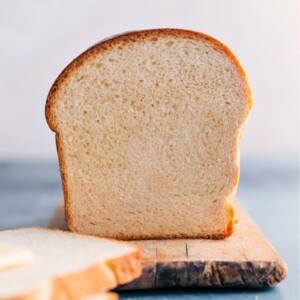
White Bread
Equipment
- stand mixer
- 2 8.5 x 4.5-inch bread pans or 2 (9 x 5-inch) bread pans
- Cooling Rack
Ingredients
- Cooking spray olive or coconut oil
- 2 cups warm milk see note 1
- 1 tablespoon active dry yeast or instant yeast, see note 2
- 1/2 cup honey
- 6-1/2 cups all-purpose flour or bread flour, divided, see note 3
- 1 tablespoon salt see note 4
- 6 tablespoons unsalted butter melted and cooled
- 1 teaspoon granulated sugar optional
- 2 tablespoons butter optional
Instructions
- If using instant yeast: In the bowl of a stand mixer, add the warm milk (see note 5; if it is too hot, it will burn the yeast). Add instant yeast and 1 teaspoon white sugar (optional) directly on top and stir to combine. Let stand 3 minutes. Skip to step 3.
- If using active dry yeast: In the bowl of a stand mixer, add the warm milk (see note 5; if it is too hot, it will burn the yeast). Sprinkle active dry yeast over the milk and the sugar (if using). Stir, then let stand 5–10 minutes or until yeast is foamy. If yeast doesn’t foam up, it is dead (either bad yeast or too hot of milk). You’ll want to dump everything out and start again; otherwise the bread won’t develop properly.
- Pour in honey and 2 cups (260g) flour. Use the beater blade to stir just until the flour is moistened, about 1 minute, scraping the sides with a spatula as needed. Let mixture sit undisturbed 10 minutes.
- As the mixture sits, melt 6 tablespoons butter in the microwave. Let butter cool to room temperature (it’s important it’s not even warm!), then stir in 1 tablespoon salt. Set aside.
- Once dough has sat 10 minutes, add in melted and cooled butter/salt mixture (use a spatula to scrape every bit into the stand mixer). Add 4 more cups (495g) flour (see note 6). Swap to a dough hook. Stir on low speed (speed 2) until mixture is all combined and begins to gather around the dough hook (about 2–3 minutes). If dough is sticking to the sides, gradually add in remaining 1/2 cup (60g) flour. You can continue to add a little more flour, up to 1 tablespoon at a time, but avoid adding too much extra flour unless it really is too sticky (still sticking on edges of bowl instead of collecting around dough hook).
- Once dough has gathered around dough hook, increase speed to medium (speed 4–6) and mix 10 minutes. Don’t go too far; your stand mixer might dance off the table. (If you don’t have a stand mixer, you can knead the dough by hand for about 10–12 minutes). We are looking for a dough that is smooth, satiny, soft, and tacky to the touch (but not sticky or dry).
- Once dough has been kneaded, place it on a clean work surface. Knead with your hands for about 20 seconds to shape it into a large even ball. Generously grease the mixing bowl with coconut or olive-oil-based spray. Place dough in the bowl and turn it to coat in the oil. Cover dough with a damp cloth and place bowl in a warm place (~70℉) to rise until it doubles in size, about 1 hour.
- Remove damp cloth and punch into the dough to release the air. Divide the dough into 2 equal parts (I recommend a food scale to make sure you’ve got the same amount of dough in each half). Shape dough into two loaves (see note 7) and place in greased 8.5x4.5-inch bread pans (see note 8). Cover pans with a damp cloth and let them rise in a warm place for another hour or until about doubled in size. Do not let bread rise longer than needed; this will cause the bread to develop a yeasty taste.
- Bake at 375℉ 32–40 minutes (see note 9). Right out of the oven, optionally rub remaining 2 tablespoons butter on the tops of the loaves. Let bread cool in the pan 10 minutes. Then transfer to a wire cooling rack and let cool for at least 30 minutes before slicing. (The bread is still cooking even out of the oven.) Slice and serve.
Video
Recipe Notes
Nutrition
Nutrition information is automatically calculated, so should only be used as an approximation.
